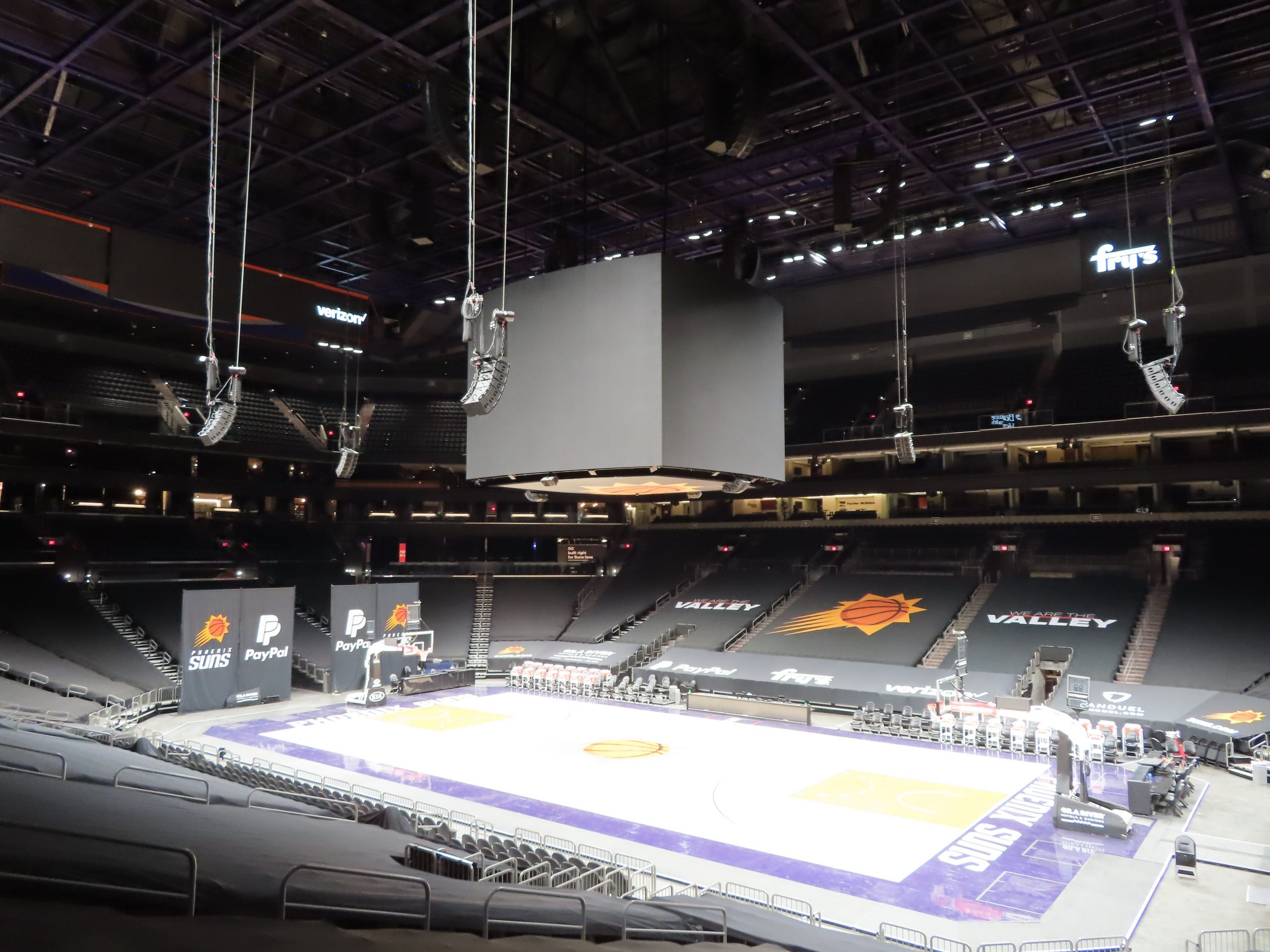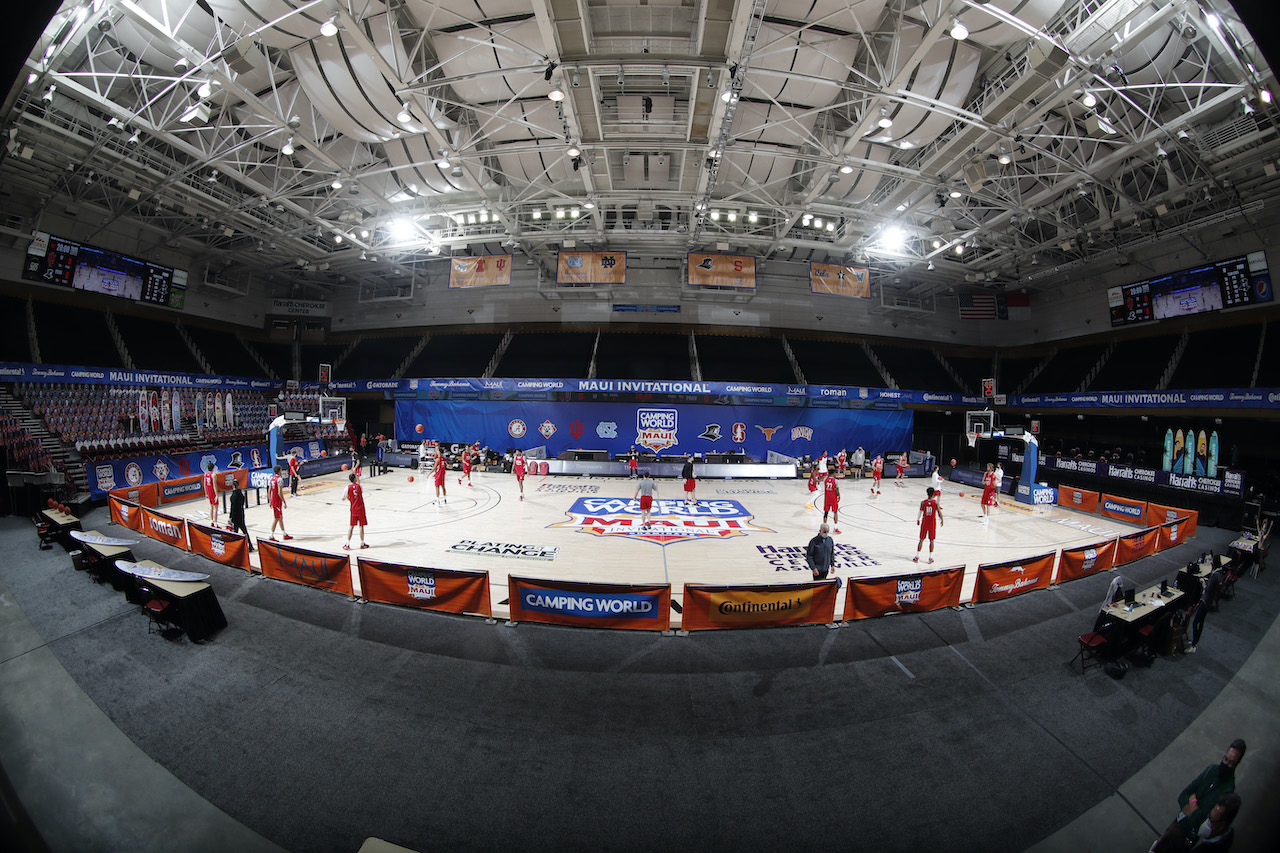Tech Focus: Augmented Crowd Sound, Part 2 — A Look at Two Specialized PA Systems
Temporary systems make (almost) empty arenas sound full
Story Highlights
The PA systems used for augmented crowd sound are becoming their own subcategory within the venue-sound sector. They have their own particular acoustical exigencies — aiming a speaker capable of outputting 102 dB directly at a highly reflective surface like a basketball court flies in the face of everything taught in Acoustics 101 — and their own fraught economics: demand for them comes at a time when venues are experiencing drastically reduced revenues. And then, there’s the existential reality that the systems may not be needed once the reason for them in the first place — the COVID-19 pandemic — is routed.
However long they end up being useful, though, their effect while they’re in place is unquestionable.
Click here Tech Focus: Augmented Crowd Sound, Part 1 —A Category of Dedicated Sound Systems Is Born.
“You can see the difference it makes in the way [the athletes] play when it’s on,” says Gary Gillespie, director, engineering and A/V technology, Phoenix Suns, which recently installed a crowd-sound PA system in the NBA Phoenix Suns Arena. “When it’s combined with live crowds from inside the arena, it sounds like a full house.”

Phoenix Suns Arena has deployed L-Acoustics Kara II speakers in a sound system dedicated to augmented crowd sound.
The Suns’ crowd-sound PA came about serendipitously. The original design of the venue’s new main sound system — part of the $230 million Project 201: PHX Reimagined, designed to convert the nearly 30-year-old arena into a state-of-the-art venue for the Suns and the WNBA Phoenix Mercury — called for eight hangs of L-Acoustics Kara II speakers. However, a recent update to that product, known as Panaflex, added enhanced coverage geometry and SPL distribution, which allowed reduction in the number of line-array hangs required. That left the venue with 28 extra speaker boxes from the original purchase that Gillespie initially figured would serve as backup inventory or to build a standalone special-events audio system.
However, the extra boxes came in handy almost immediately, after the NBA directed teams to implement their own enhanced–crowd-noise systems for the current season. Those additional speakers now comprise six hangs of six Kara II boxes — eight additional boxes were rented from Pro Audio & Video, the integration firm that designed and installed the main PA system — dedicated to the crowd-sound system developed by Firehouse Productions, the firm that the NBA employed for augmented crowd sound in its Orlando “bubble” last season and at most NBA venues.
“We can have up to 3,000 people in the stands as of now,” notes Gillespie. “There’s a good base crowd sound from that, but we can intersperse that with the augmented–crowd-sound system.”
The crowd-sound system itself had to be repositioned so as not to impact sightlines, he adds. “It’s mainly designed to cover the floor so the ball players can feel it.”
Big-Venue Sound in a Very Small Arena
Another recent example of a temporary PA system used to play crowd sound was deployed at the 2020 Camping World Maui Invitational, hosted last fall by Harrah’s Cherokee Center in Asheville, NC. It was the first time the event, which is covered by ESPN, took place in the mainland U.S., a move prompted by COVID considerations. The event also took place without spectators in the venue. To re-create the raucous atmosphere of Maui’s Lahaina Civic Center, where the tournament is usually held, the event deployed d&b audiotechnik’s Fanblock system to re-create the fan experience for the participating college basketball teams.

The d&b audiotechnik’s Fanblock system gave big-venue sound to the 2020 Camping World Maui Invitational, held at Harrah’s Cherokee Center in North Carolina.
Fanblock’s components are the system software, developed by UK theatrical sound company Autograph Sound, and the sounds themselves, developed by Autograph’s content partner, FanChants. The sounds are delivered via a d&b sound system installed at Harrah’s Cherokee Center for the event. The Fanblock system had previously been used at the Championship games at the Kiyan Prince Foundation Stadium in London. The basic audio content consists of non–team-specific sounds, including background “bed” loops to provide a continual atmosphere within the stadium and a library of sound cues that can be triggered by operators in response to the action.
Synergy of Systems
What sets the Fanblock system apart from other crowd-sound systems is that its crowd-sound content was developed with a specific PA product in mind, including the audio system’s processing software. Fanblock is a multichannel surround-sound platform that is dynamically controlled in real time to directly respond to the events of the game. Using the matrix functions of the d&b DS100 processor to send audio to the distributed loudspeakers through its En-Scene software, it allows complex sound events to move dynamically around the stadium in real time in response to the actions on the field once they have been virtualized in the company’s Soundscape acoustical-modeling software. That sound is picked up by crowd mics placed in the venue and become part of the event’s broadcast audio as well.
“When the Maui Invitational moved to Asheville,” says Nick Malgieri, advanced systems specialist, d&b audiotechnik, “they went to a very small arena because they knew that they weren’t going to have to accommodate fans, but they were used to a much bigger sound in a much bigger arena. So, even though they were in a much smaller facility, we were able to make it sound like the much larger facility that they felt more comfortable in.”
After COVID?
If and when augmented-crowd sound is no longer necessary, a situation like the one at Phoenix Suns Arena could simply revert to what the PA-system components were going to be used for originally, which was to make a spare small PA for use at special events.
Malgieri, however, feels that the synergy between the content-generation system and the sound-system hardware and software could extend the usefulness of augmented–crowd-sound systems, in both real and virtual sports environments. Esports, for instance, would benefit from the ability of the object-based system to create multiple perspectives that online viewers could choose between — not unlike, he suggests, how UK football fans are self-segmented in stadiums, creating huge stereo images.
“Imagine that, only online and with much, much larger audiences,” he says, noting that the system can manage as many as 64 audio objects through as many speakers.
Malgieri adds that the company is also looking at real-life environments, such as casino sportsbooks, which have proliferated in the wake of the U.S. Supreme Court’s 2018 ruling overturning the federal ban on commercial sports betting in most states.
“The system can add the reverberation effect of an arena or a stadium to the crowd sound in an environment like that and keep it narrowly applied to different areas of the room so you could use it for multiple games at once,” he says. “The possibilities are endless.”
